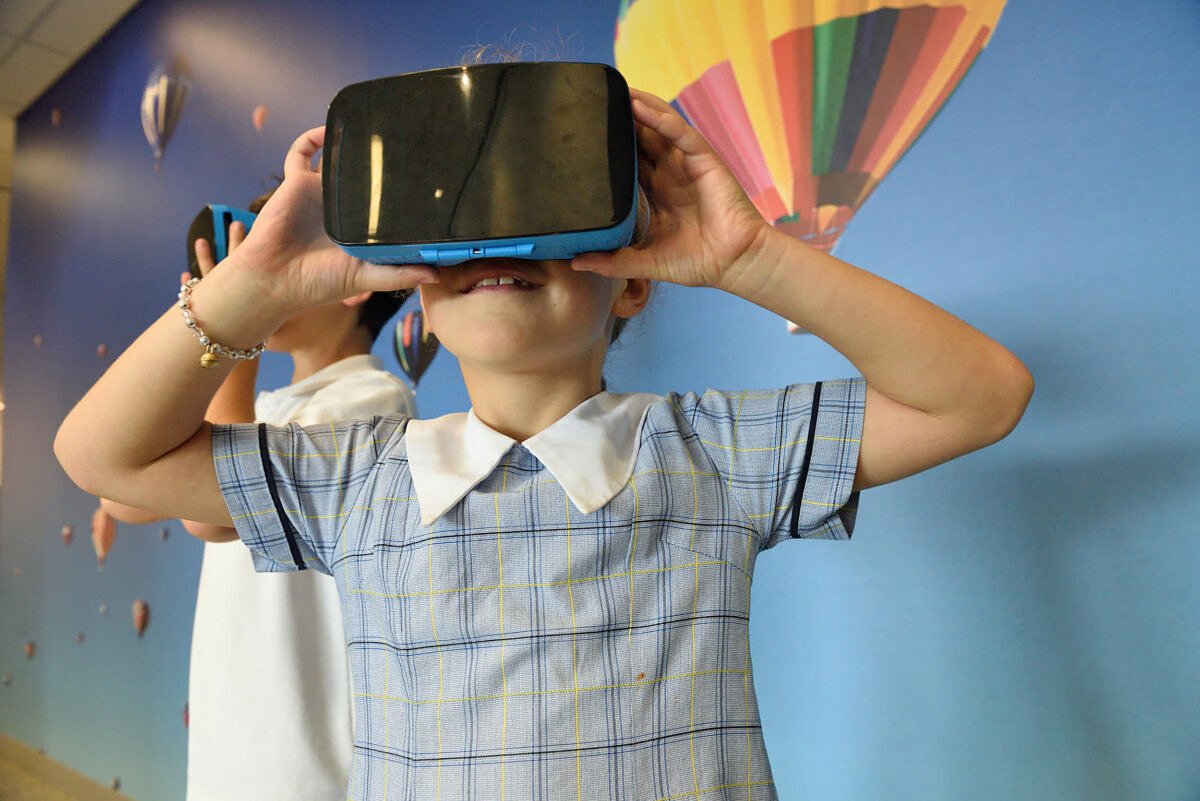Immersive learning: experience education up close and personal with VR and AR
Immersive learning is bringing digitalization in education to a new level: Augmented reality (AR) and virtual reality (VR) technologies provide an intensified learning experience. What does virtual learning look like and what examples of its use already exist? You’ll find all the answers below.

Immersion: dive into educational content – virtually
Augmented and virtual reality applications aren’t only used in industry and gaming, but increasingly in the education sector, too. These innovative learning technologies are used to create an educational experience that can be experienced up close and personal, an approach called “immersive learning.” In the state of immersion, learners immerse themselves with several of their senses in a virtually created learning environment in which the educational content is experienced directly and interactively. As a new form of knowledge transfer, immersive education uses both AR and VR learning scenarios: While augmented reality applications add virtual elements to the real world, the virtual reality experience is a full simulation of a world that closely resembles reality. In this experience, learners can actively interact with the help of VR headsets that detect the wearers’ movements. Therefore, the VR experience in particular allows learners to be fully immersed in the virtual learning environment and have experiences that are distinctly close to reality.
Where is immersive learning already being used in education?
Immersive education or “immersive learning” is already being implemented in some areas of education, since it not only improves the learning effect and promotes the transfer of knowledge, but is also particularly recommended where, for example, the real learning situation would be associated with hazards or very high costs. While some AR and VR applications in education and teaching are still rather experimental in nature, there is an overall trend towards expanding virtual learning opportunities on a broader basis in the future – thus taking digital education to a new level. Some current examples include:
3D lectures at universities
Harvard University is leading the way when it comes to the use of VR in education. Since the 2016/17 winter semester, the university has been offering its popular introductory computer science course “Computer Science 50 (CS50)” in VR format. With the help of data glasses, students appear to be sitting in the middle of the lecture hall among their fellow students, even though they are actually taking part from home. More than three million students from around the world have already completed the course online.
Such a virtual learning format, called a MOOC (massive open online course), enables a large number of interested people to have a direct educational experience without having to be physically at its location.
Many other universities have now developed comparable learning scenarios for immersive learning, such as Karlsruhe University of Applied Sciences, which has incorporated augmented reality elements in a series of lectures. Using data glasses and cross-platform avatars from the company Ready Player Me, students are immersed in an interactive learning environment. Similarly, the Berlin School of Economics and Law and the Würzburg-Schweinfurt University of Applied Sciences, for example, have for some time been experimenting with learning in immersive worlds in which students can move around in the form of avatars.
Immersive learning in medicine
Immersive learning can also be used in extremely useful areas in the medical sector. Thanks to AR and VR technologies, surgeons can learn difficult surgical techniques on a three-dimensional model in the virtual environment without having to perform them on real patients.
Another example: At the start of the COVID-19 pandemic, a VR training course from Oxford Medical Simulation (OMS) enabled around 17,000 healthcare professionals to be trained or refresh their medical knowledge without incurring the risk of infection. In the simulation, learners encounter a realistic treatment scenario where they operate using VR goggles.
In times of social distancing, an immersive educational experience can be had from anywhere with the appropriate hardware.
Virtual learning scenarios in the school sector and adult education
Digitalization in schools can become even more attractive with immersive learning opportunities, offering an intensive and tangible educational experience instead of simple e-learning. From virtual school field trips, such as those offered by Google Expeditions, to hazard-free experimentation in a simulated chemistry classroom, there are no bounds to the potential applications.
The international nature and environmental protection organization WWF, for example, offers a virtual educational program aimed at learners of all ages with its Kopernikus project Power-to-X (P2X): Here, a futuristic world is simulated in which hydrogen plays a leading role in energy supply. Anyone interested in this topic can immerse themselves in this scenario with the help of HTC Vive glasses and gain first-hand learning experience.
AR and VR in education: Learning technologies fit for the future?
The use of virtual and augmented reality technologies in education is already showing some promising advances in its application, but overall it’s still in its infancy. For example, there is no completely virtual course of study yet, but the possibility is being considered by several universities. Currently, the development of AR and VR learning applications is only financially worthwhile with a larger number of participants, such as with MOOCs – but once the formats are developed, they can theoretically be used by an unlimited number of learners, which in the long term contributes to a more sustainable and more global transfer of knowledge. Particularly when it involves learning technical skills that consume meager resources in the real world, learning in a virtual environment is currently already proving to be a cost-saving alternative. As the required hardware becomes more and more affordable over time, AR and VR technologies are likely to play an increasingly important role in digitalization in education in the future.





